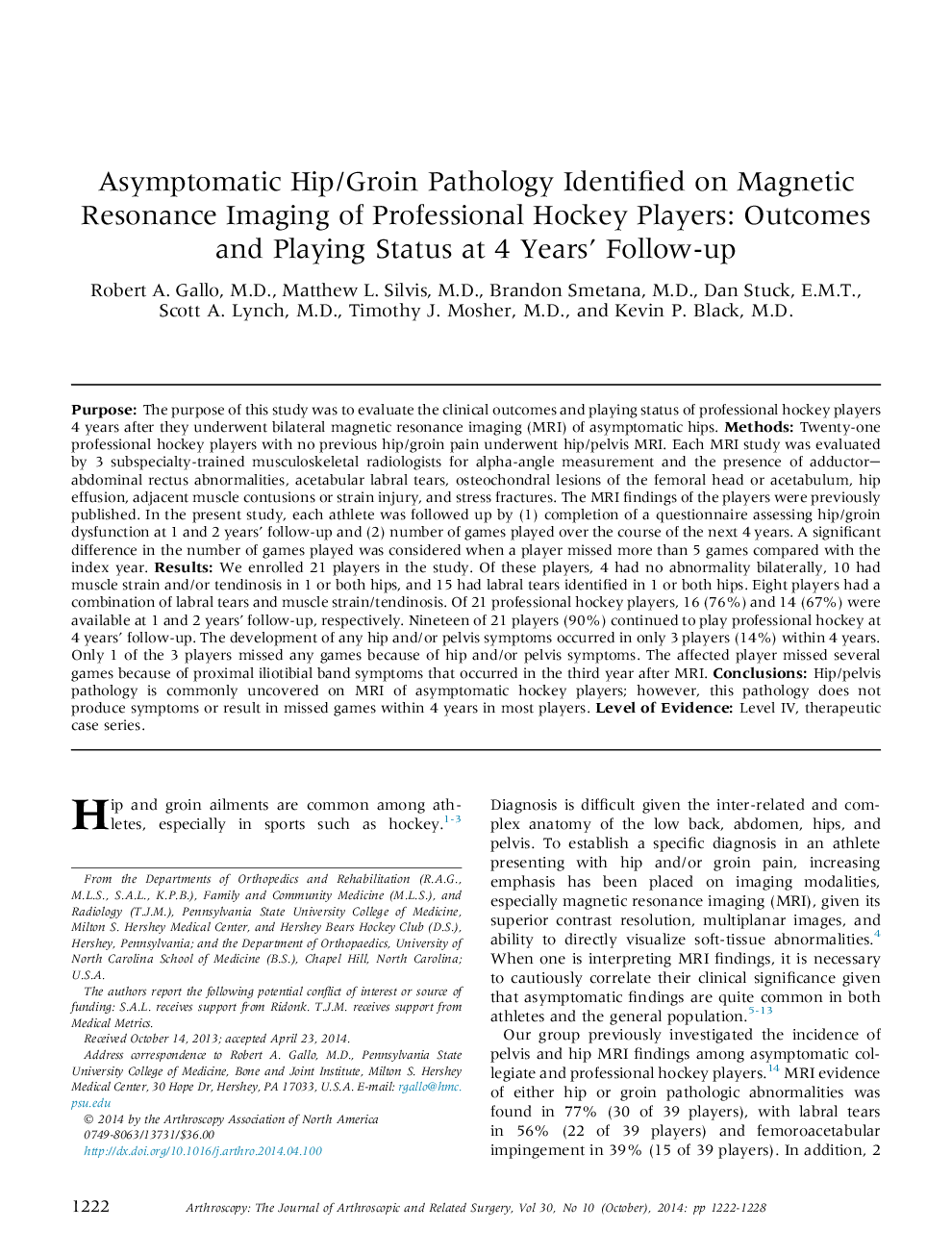| Article ID | Journal | Published Year | Pages | File Type |
|---|---|---|---|---|
| 4042896 | Arthroscopy: The Journal of Arthroscopic & Related Surgery | 2014 | 7 Pages |
PurposeThe purpose of this study was to evaluate the clinical outcomes and playing status of professional hockey players 4 years after they underwent bilateral magnetic resonance imaging (MRI) of asymptomatic hips.MethodsTwenty-one professional hockey players with no previous hip/groin pain underwent hip/pelvis MRI. Each MRI study was evaluated by 3 subspecialty-trained musculoskeletal radiologists for alpha-angle measurement and the presence of adductor–abdominal rectus abnormalities, acetabular labral tears, osteochondral lesions of the femoral head or acetabulum, hip effusion, adjacent muscle contusions or strain injury, and stress fractures. The MRI findings of the players were previously published. In the present study, each athlete was followed up by (1) completion of a questionnaire assessing hip/groin dysfunction at 1 and 2 years' follow-up and (2) number of games played over the course of the next 4 years. A significant difference in the number of games played was considered when a player missed more than 5 games compared with the index year.ResultsWe enrolled 21 players in the study. Of these players, 4 had no abnormality bilaterally, 10 had muscle strain and/or tendinosis in 1 or both hips, and 15 had labral tears identified in 1 or both hips. Eight players had a combination of labral tears and muscle strain/tendinosis. Of 21 professional hockey players, 16 (76%) and 14 (67%) were available at 1 and 2 years' follow-up, respectively. Nineteen of 21 players (90%) continued to play professional hockey at 4 years' follow-up. The development of any hip and/or pelvis symptoms occurred in only 3 players (14%) within 4 years. Only 1 of the 3 players missed any games because of hip and/or pelvis symptoms. The affected player missed several games because of proximal iliotibial band symptoms that occurred in the third year after MRI.ConclusionsHip/pelvis pathology is commonly uncovered on MRI of asymptomatic hockey players; however, this pathology does not produce symptoms or result in missed games within 4 years in most players.Level of EvidenceLevel IV, therapeutic case series.
